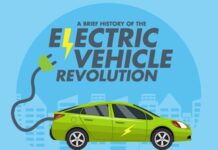The automotive industry’s next big thing and it could be the biggest is no longer just around the corner: It’s here. The bottom line is that these changes are going to revolutionize the way we drive, build our cars, and possibly even how we think about getting from one place to another. Electric and autonomous vehicles, advanced connectivity as well as making manufacturing processes “smart” the future of automotive has an exciting and sustainable journey ahead. In this article, we will go into a few of the most earth-shattering upcoming technologies within Automotive and pay some service to how these same kinds of advancements are impacting the agriculture machinery sector, specifically in relation to tractors.
Electric Vehicles (EVs)
While there has already been massive movement in the arena of electric vehicles, this is only the tip of what either could or should be coming. Improvements in battery development should also lead to increased driving ranges, shorter charge times, and lower-cost batteries For instance, solid-state batteries are something that we may see in the near future and which promise much better performance potential than what our existing lithium-ion battery technology can provide. The batteries will offer greater energy density and improved safety with reduced charging times enabling electric vehicles to be a viable alternative for many more people.
Autonomous Driving
Another area of expected significant growth is autonomous driving technology. Tesla, Waymo, Uber, and other companies have also been spending billions of dollars on trying to develop fully autonomous vehicles. The vehicles are equipped with sensors, cameras, and radar, as well as artificial intelligence to understand their surroundings and drive on the road like a human would. “This research has the potential to significantly reduce accidents, improve traffic flow, and expand the ability to send individuals who are now unable to drive due to disability or age,” he said. Fully autonomous cars aren’t quite there yet, it would seem. But we’re getting close!
Connectivity and the Internet of Things (IoT)
Connected vehicles are changing the way we drive. Modern vehicles are being fitted with more and more advanced connectivity, enabling them to communicate not only with other cars or the surrounding infrastructure such as traffic lights, but some cars also have the ability to bring in connected home devices. This is just the tip of the broader Internet of Things (IoT) ecosystem! A connected vehicle, in comparison, can not only give you up-to-the-minute traffic information and talk to your smartphone for navigation help but can also tell the pretty cursor on your dashboard that a semi-somewhat-maybe-hopefully-minor breakdown is imminent. It further mentioned that this is helped by the Vehicle-to-Everything (V2X) communication technology, which allows cars to communicate with traffic lights, road signs, and other aspects of infrastructure allowing a smart and safe roadway.
Artificial Intelligence (AI) and Machine Learning
AI and machine learning are at the forefront of this new technology. These technologies will eventually allow cars to “learn” from their surroundings and act on that information. for instance, AI may be used to strengthen driving help systems that underpin safety skills consisting of automatic emergency braking, lane-keeping assist, and adaptive cruise control. In addition, machine learning algorithms can be used to further optimize different vehicle functions like fuel efficiency and battery management of electric vehicles.
Advanced Manufacturing Techniques
Increases in manufacturing innovation are also being observed within the automotive sector. 3D printing, otherwise known as additive manufacturing, is a way to make more complicated parts with less waste. Greater design freedom and the ability to manufacture parts that would otherwise be difficult or impossible to produce with traditional machining processes. Furthermore, car manufacturing is becoming more efficient and cost-effective with Industry 4.0 technology the hidden “smart” factories behind the production lines or adding automated facilities to complete the repetitive task efficiently are proving beneficial in nearly all industrial markets including car production processes.
Sustainable Materials and Practices
Sustainability is becoming a major concern for the automobile industry. Besides the use of recycled plastics and natural fibers, sustainable materials are also increasingly being used by manufacturers in making vehicles (The OEDC). In addition, now we are appearing to be going greener as well by trying to lessen the polluting footprints of those different-notch manufacturing processes. Many automakers, for example, are making investments in renewable energy to power their factories and taking steps to cut down on water and energy use.
The Influence on Agricultural Machinery
Modern tractors as well have been developed along the lines of automotive technology and it’s not only in passenger vehicles that these developments are taking place but also in the field of agriculture. We have been seeing an increasing number of electric vehicles and now the day is not far, that we will start noticing more amount of the electric tractor instead of our traditional diesel-controlled counterparts. All of this makes electric tractors potentially ideal for many types of farms, providing a way to cut down on emissions and operating costs while going about chores with less noise.
Placing autonomous technology also, in agricultural machinery. Operating with very little human interaction, autonomous tractors, and harvesters can execute activities, creating more competent methods of discovering new grounds. GPS-enabled, sensor-driven and AI-powered machines navigate fields to plant seeds, dispense fertilizers, and collect produce. All of this optimizes labor requirements while making the process more productive.
The same is also happening to farm management, though, thanks to connectivity and the IoT. A connected tractor, as shown in the dispatcher world area. Once having multiple field equipment and they can communicate with each other through cloud or central management to optimize on-field operation. This range in technology leads to remote monitoring and control of farm equipment, and real-time data on crop conditions (and soil status), so you can more easily make decisions that help you grow more and smarter while using fewer resources.
Conclusion
The automotive industry is undergoing a period of rapid transformation, driven by revolutionary technologies that promise to change the way we drive, manufacture, and think about vehicles. Electric vehicles, autonomous driving, advanced connectivity, AI, and sustainable practices are just a few of the innovations shaping the future of this industry. These advancements are not only enhancing the performance and efficiency of vehicles but also making them more sustainable and environmentally friendly. Moreover, the impact of these technologies extends beyond passenger vehicles to sectors like agriculture, where modern tractors are benefiting from similar innovations. As these technologies continue to evolve, they will undoubtedly usher in a new era of transportation and machinery, marked by greater efficiency, safety, and sustainability.
For more information, visit ApzoMedia



































































